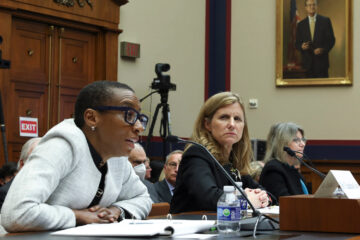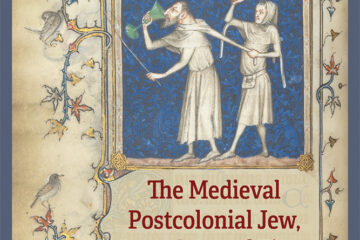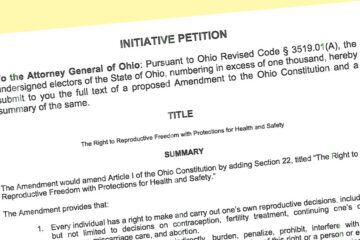Ukraine: 1941 and 2023

Opinion
By Jim Nathanson
I was standing in what looked to be a pleasant city park. Though it was August, a light breeze made for a comfortable day, but I felt anything but comfortable as I stood and just stared at the ground. It looked so very ordinary, but it was anything but ordinary.
There once had been a deep ravine here; it had been filled, the ground leveled, as if altering the landscape could change what happened here. Nothing could. Eighty-two years ago, in September 1941, nearly 33,800 Jews were butchered at this site. The ravine was Babyn Yar — located in Kyiv, Ukraine’s capital.
I was in Ukraine for five days, in the midst of its war with Russia, for no other reason than to the show my support for the Ukrainian people in their battle against Putin’s naked aggression.
But I couldn’t go to Ukraine without stopping at Babyn Yar. Not only was it the sight of one of the most horrific episodes of the Holocaust, but during the Shoah, few people anywhere collaborated more with the Nazis than did the Ukrainians, and few areas saw their Jewish population so thoroughly decimated, with a prewar population of 2.7 million, 60% of which were killed by war’s end.
Reconciliation through scholar’s thesis
In my support for the Ukraine of today, I needed to make peace with the memory of the tens of thousands of my fellow Jews who died in the Ukraine of yesterday.
Helping me with this reconciliation is an especially insightful book by Timothy Snyder, Black Earth: The Holocaust as History and Warning. A native Daytonian, Snyder is a history professor at Yale University.
Snyder’s core thesis is that “minority populations depend most on the protection of the state, and upon the rule of law, and it is they who suffer most from anarchy and war.”
The Nazis soon learned that the first step in ridding the world of Jews was to destroy the states in which they lived, to turn Jews into stateless people no longer under the protection of any legal authority.
The Holocaust was the most brutal, Snyder argues, in areas such as western Ukraine where political authority was decimated by the back and forth of Russian and German occupations, each of which set out through sheer brutality to dismantle local political structures — in the case of the Russians, to build a new society, and in the case of the Germans, to create stateless regions that could be ‘colonized’ for the benefit of the Reich.
The degree of state destruction and the obliteration of the rule of law determined the extent local populations joined in the killing of Jews — not the ethnicity of the killers.
This distinction made no difference to the millions of Jews who were murdered, nor does it expunge the culpability of those who did the killing, but it should make a difference in how we view the descendants of their murderers today.
Nationalist heroes with the stench of history
Nonetheless, many of Ukraine’s current allies do question their continued honoring of nationalist leaders who fanned antisemitic sentiment and often sided with the Nazis — committing numerous atrocities against Jews and others they viewed as sympathetic to the Soviets.
Just this January, for example, the Ukrainian parliament commemorated the birth of Stepan Bandera, who was the leader of the Organization of Ukrainian Nationalists, the coalition that led the battle for Ukrainian independence but that also often collaborated with the Nazis.
In April 1941, for example, the OUN declared that Jews were the foremost enemy of Ukraine and that “OUN combats the Jews as a prop of the Muscovite-Bolshevik regime.”
Yad Vashem notes that months before Babyn Yar, Ukrainian nationalists were directly responsible for the deaths of at least 6,000 Jews.
Today’s obsessive political correctness would have us judge all historic figures by today’s standards with little or no recognition of the historical context within which these individuals lived and left their mark on history.
But those of us who question this obsessiveness recognize that our heroes often not only had feet of clay but sometimes the stench of history clings to their memory.
The Ukrainian people should be allowed their nationalist heroes however intense that stench might be.
We Americans, after all, haven’t stopped purchasing Ford automobiles just because Henry Ford was one of the most outrageous American antisemites of the early 20th century. We haven’t stopped listening to Richard Wagner‘s music just because he was one of the most outrageous antisemites of the 19th century. And we haven’t torn down the monuments to Charles Lindbergh just because he was our nation’s foremost fascist sympathizer up until Dec. 7, 1941.
It’s also worth noting that no place in Europe has a longer history of a Jewish presence than Ukraine. There is even evidence that Jews were living in Greek settlements in the Crimea as early as the fourth century B.C.E. and much of modern-day Ukraine east of the Dnipro River was part of the Khazarian Empire, whose nobility and many of its citizens adopted Judaism around 800 C.E.
Though Khazaria largely disappeared by the mid-10th century, there are records of Khazarian Jews in the vicinity of present-day Ukraine as late as the 12th century.
My hotel in Kyiv was located in the Podil, one of city’s oldest sections, now a bustling entertainment district even as the war rages.
A thriving Ashkenazi community existed there as early as the 11th century. Even today, the Podil is home to two early and important choral synagogues. A short walk from my hotel was the Rozenberg or Podil Synagogue, a superb Moorish-style building completed in 1895.
Not too far way is another late 19th-century choral synagogue, the Brodsky Synagogue, built more in Romanesque Revival style, that boasts both a kosher market and kosher restaurant.
As I walked through both synagogues, two of seven found in Kyiv, I marveled at the endurance of the local Jewish community.
‘Over a thousand years of friendship’
Henry Abramson, a Touro University historian and an expert on Ukrainian-Jewish history, notes that the intermittent periods of violence against Jews “doesn’t negate over a thousand years of friendship.”
He further notes a long history of cultural interchange that wouldn’t have occurred unless Jews and Ukrainians were interacting on friendly terms for most of their shared history, or as he puts it “unless Ukrainian and Jewish children were spending time in each other’s kitchens.”
A Pew Research poll published in March 2018 found that Ukrainians are far more likely to welcome Jews as fellow citizens than the populations of any other Eastern European nation.
Only 5% of Ukrainians would not accept Jews as fellow citizens, compared, for example, to 23% of Lithuanians, 22% of Romanians, 18% of Poles, and 14% of Russians.
Nothing, of course, speaks more about the Ukraine of today than the fact that its current president, Volodymyr Zelenskyy, is a Jew. Elected in 2019 on an anti-corruption platform with over 70% of the vote (and after playing a Ukrainian president in a TV comedy), this improbable politician has evolved into a charismatic wartime leader who has kept his nation and its allies united.
His religion has never been an issue, and even his political spat with the popular mayor of Kyiv has had no religious overtones.
Only Putin has tried to make an issue of Zelenskyy’s Jewishness. That his nation has rallied around him is a testament to both President Zelenskyy and the Ukrainian people.
But there is something else that I think speaks strongly to the Ukraine of today — the actual trigger that reminded me how important it was that I visit Babyn Yar.
There is a Hebrew song, Eli, Eli, (My Lord, My Lord) that many of us have heard sung on Yom Hashoah, the yearly event we hold to commemorate the Holocaust.
The words were originally a poem written by a young woman, Hannah Senesh, who at the age of 19 in 1939 had immigrated to British Mandate Palestine to escape the antisemitism she faced in her native Hungary. Hannah Senesh was a true woman of valor.
In 1943, she enlisted in the British Army and volunteered to be trained as a resistance fighter. On March 14, 1944, she parachuted into Yugoslavia and spent three months with Josip Tito’s partisans before working her way north toward her ultimate objective, Budapest.
Soon after reaching Hungary, she was captured. Despite enduring five months of interrogation and torture, she never divulged a single detail of her mission. On Nov. 7, 1944, she was executed by firing squad.
In January, Israel’s ambassador to Ukraine, Michael Brodsky, shared on Twitter the Ukrainian Army Choir singing Eli, Eli at Babyn Yar during ceremonies marking International Holocaust Remembrance Day.
The menorah where I was able to place a memorial stone is a tribute to the Jews killed at Babyn Yar and the focal point of this wonderful video.
The heroism of Hannah Senesh during the Shoah and the heroism of the Ukrainian people today both speak eloquently to that spirit within us that yearns for freedom and demands that we fight evil when encountered.
Our Haggadah, which we read each Passover, reminds us that this is the responsibility of each and every generation.
When we think of the Ukrainian people, we should never forget those who died at Babyn Yar, but we should also remember that moment — in the midst of their own bitter struggle against tyranny — when the Ukrainian people did honor to their memory.
Jim Nathanson, a Dayton-based political and public affairs consultant for 30 years, was political director of the Republican National Committee in 1992 and had previously taught political science at colleges in New York and Ohio.
To read the complete October 2023 Dayton Jewish Observer, click here.





